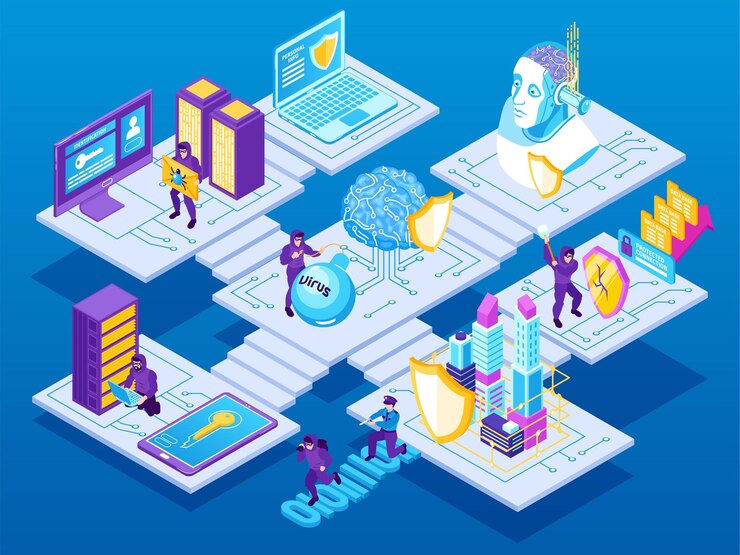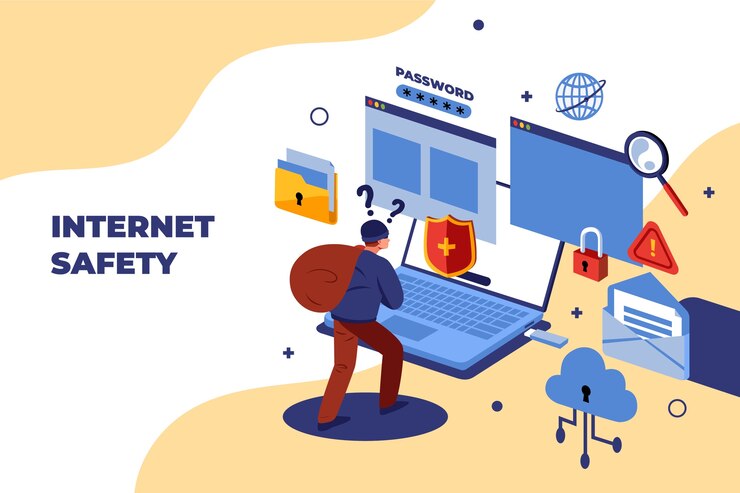The ICT barriers include lack of access, digital literacy, cost, and technological infrastructure limitations. These obstacles hinder the effective use of information and communication technology.
Moreover, they impede individuals and organizations from taking full advantage of the benefits offered by ICT. Businesses, particularly in developing countries, face difficulties in adopting ICT due to these barriers. Addressing these challenges is crucial for promoting digital inclusion and ensuring equitable access to technology.

By overcoming these hurdles, individuals and organizations can leverage ICT for improved communication, collaboration, and productivity. Embracing solutions to these barriers is essential for fostering a technologically empowered society and economy.
Defining ICT Barriers
Definition Of ICT Barriers
The barriers of ICT, or Information and Communication Technology, refer to the challenges and obstacles that can hinder the effective use and implementation of technology in various settings such as businesses, education, healthcare, and government. These barriers can encompass technical, economic, social, and organizational challenges that prevent individuals and organizations from fully leveraging the potential of ICT.
Importance Of Understanding ICT Barriers
Understanding ICT barriers is crucial for individuals, businesses, and policymakers as it allows them to identify and address the hindrances that prevent the optimal utilization of technology. By recognizing and addressing these barriers, organizations can enhance innovation, productivity, and efficiency, while individuals can access the benefits of digital tools and resources, thereby contributing to overall economic and social development.
Types Of ICT Barriers
When it comes to implementing Information and Communication Technology (ICT), various barriers can hinder the success of its adoption. These barriers can be categorized into different types: infrastructural barriers, economic barriers, and cultural barriers. Understanding these barriers is crucial in addressing the challenges related to ICT adoption and usage.
Infrastructural Barriers
Infrastructural barriers, such as inadequate network connectivity, insufficient power supply, and outdated hardware and software, can impede the effective utilization of ICT. Without robust infrastructure, organizations and individuals may face challenges in accessing and leveraging digital technologies for communication, data management, and other essential operations. Poor infrastructure can compromise the performance and reliability of ICT systems, hindering productivity and efficiency.
Economic Barriers
Economic barriers encompass the financial constraints that hinder access to ICT resources and tools. The high cost of acquiring and maintaining ICT infrastructure, software licenses, and technical support services can limit the adoption of modern technologies, particularly for small businesses and underserved communities. Additionally, the digital divide perpetuated by economic disparities may restrict individuals from accessing ICT due to affordability issues.
Cultural Barriers
Cultural barriers refer to the influence of societal norms, beliefs, and practices on ICT adoption and usage. Cultural factors can create resistance to change and innovation, impacting the acceptance and integration of ICT within communities and organizations. Language barriers, digital literacy gaps, and cultural stigmas associated with technology use can affect the effective utilization of ICT, making it essential to consider cultural contexts when implementing digital solutions.
Impact Of ICT Barriers
ICT barriers can hinder access to technology, including limited resources, lack of digital skills, and inadequate infrastructure. These barriers can impede individuals and communities from fully benefiting from ICT advancements, resulting in disparities in education, employment, and social inclusion. Addressing these barriers is essential for promoting digital equity and inclusive development.
Limitations On Access To Information
The barriers to information and communication technology (ICT) not only hinder access to critical data and knowledge but also perpetuate inequality and restrict socio-economic development. Limited access to information exacerbates disparities in education, healthcare, and economic opportunities, constraining the ability of individuals and communities to thrive in the digital age.
Impediments To Technological Advancement
Technological progress is hindered by barriers such as inadequate infrastructure, restrictive regulations, and insufficient investment. These impediments stifle innovation, hamper the adoption of advanced technologies, and impede the development of local ICT capabilities, leading to a digital divide that marginalizes underserved communities.
Overcoming ICT Barriers
Overcoming ICT barriers is essential for harnessing the full potential of technology and ensuring its widespread accessibility. Addressing infrastructural barriers and financial constraints are crucial in enabling individuals and businesses to leverage the benefits of ICT. By implementing effective strategies and economic solutions, these barriers can be surpassed, leading to improved digital inclusion and enhanced technological capabilities.
Strategies For Addressing Infrastructural Barriers
When it comes to addressing infrastructural barriers, organizations and governments can implement various strategies to enhance ICT accessibility and reliability. Some effective approaches include:
- Investing in the expansion and maintenance of broadband infrastructure to ensure widespread connectivity.
- Collaborating with private sector entities to deploy ICT infrastructure in underserved areas.
- Establishing policies and incentives to promote the development of digital infrastructure in remote or economically disadvantaged regions.
- Utilizing innovative technologies such as satellite internet to bridge connectivity gaps in remote areas.
Economic Solutions To Overcome Financial Constraints
To overcome financial constraints hindering ICT adoption, there are economic solutions that can be employed to facilitate the affordability and accessibility of technology. Some key measures include:
- Providing subsidies and grants to support the purchase of ICT equipment and services for individuals and organizations with limited financial resources.
- Implementing tax incentives and exemptions to reduce the financial burden of investing in ICT infrastructure and equipment.
- Facilitating access to low-interest loans and financing options specifically tailored for ICT investments, particularly for small and medium-sized enterprises.
- Promoting public-private partnerships to fund ICT projects and initiatives, leveraging both public funding and private capital for sustainable ICT development.
Future Of ICT Barriers
The future of ICT barriers is a crucial consideration as technology continues to advance and evolve. Anticipated advancements in minimizing ICT barriers and potential challenges in addressing emerging barriers are critical for ensuring the continued growth and accessibility of ICT across various sectors.
Anticipated Advancements In Minimizing ICT Barriers
Advancements in artificial intelligence and machine learning are expected to play a significant role in minimizing ICT barriers. These technologies have the potential to enhance automation, making ICT systems more intuitive and user-friendly. By streamlining processes and providing personalized assistance, AI and machine learning can enhance accessibility and mitigate common barriers such as complex interfaces or limited usability for individuals with disabilities.
Integration of 5G technology is anticipated to revolutionize connectivity and speed, reducing latency and facilitating faster data transmission. This advancement holds promise for improving remote access to ICT resources and services, potentially narrowing the digital divide and increasing access for underserved communities.
Potential Challenges In Addressing Emerging Barriers
The introduction of new technologies may also pose challenges in addressing emerging barriers. Security and privacy concerns surrounding the proliferation of IoT (Internet of Things) devices and interconnected systems present a significant challenge. Addressing these concerns requires robust cybersecurity measures and ongoing vigilance to safeguard sensitive data and prevent breaches.
Compatibility issues may arise as ICT systems continue to diversify and expand. The seamless integration of various devices and platforms is critical for ensuring interoperability and minimizing compatibility barriers that can hinder the seamless exchange of data and communication.

Frequently Asked Questions: What Are The Barriers Of ICT ?
What Are The Main Barriers To Ict Adoption In Organizations?
Barriers to ICT adoption in organizations include cost, lack of digital skills, and resistance to change. Overcoming these barriers is essential for successful ICT implementation.
How Can Cost Be A Barrier To ICT Adoption?
The cost of ICT infrastructure, software, and training can be prohibitive for many organizations, especially for small businesses and nonprofits. Finding cost-effective solutions and budgeting for ICT expenses is crucial.
Why Is Digital Skill Shortage A Barrier To ICT Adoption?
Many organizations struggle with a lack of digital skills among their staff, making it challenging to fully utilize ICT tools and technologies. Training programs and hiring skilled personnel can help overcome this barrier.
What Is The Impact Of Resistance To Change On ICT Adoption?
Resistance to change within an organization can hinder the successful implementation of ICT initiatives. Change management strategies and clear communication are essential to address this barrier effectively.
Conclusion
The barriers of ICT present significant challenges in the ever-evolving technological landscape. Addressing these obstacles requires a multi-faceted approach that encompasses education, accessibility, infrastructure, and policy development. By leveraging innovative solutions and fostering collaboration, we can overcome these barriers and harness the full potential of ICT for the betterment of society.
